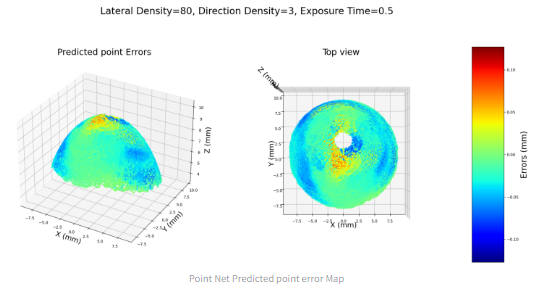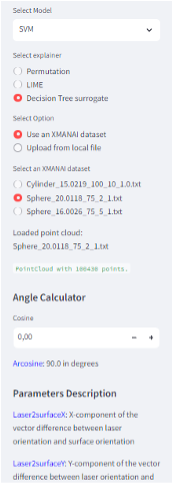XAI for Metrology at UNIMETRIK: Smart Semi-autonomous Hybrid Measurement Planning
Unimetrik is a Spanish Metrological Service company, oriented to offering solutions for the industry related to Calibration, Measurement, and Metrological engineering, and is currently exporting its technology in Europe and other relevant industrial countries all around the world. Among the metrological solutions currently offered by UNIMETRIK, the most relevant are the Metrological Studies utilizing the M3 software (the optical measurement system used to capture and analyse point-clouds) that are provided for testing the tolerances of industrial parts and components by working with different instruments and methods taking into account the accuracy required in each case.
The problem: Inefficient and unreliable dimensional quality control in manufacturing parts across sectors like automotive and aerospace due to limitations of traditional methods. Optical technology, while generating vast data, lacks optimized management. UNIMETRIK’s solution: Employing eXplainable Artificial Intelligence (XAI) to streamline measurement planning, minimize errors, expedite execution, and forecast result reliability. This addresses challenges including result variability, manual planning, knowledge preservation difficulties, and suboptimal yields.
Optimal parameters use case
The UNIMETRIK demonstrator use Explainable AI to reduce the time invested in the measuring process and to increase the accuracy of the measurements performed with M3.
A double benefit is achieved:
• The XMANAI platform contribute to “reuse” relevant information such as key parameters value configuration from previously performed jobs.
• XMANAI help metrologists in the identification of the correct values for the scanning parameters and understand why and how they impact the quality and accuracy of the measurement.
Both the design of the measurement plan definition and the identification of the key parameters involved in the configuration of the scanning device are iterative processes, where after a preliminary scan and the subsequent point cloud, the metrologist based on his/her experience needs to redefine the plan and the key parameters to reduce the deviation from the measurement and the real part.
Experienced metrologists with extensive experience can identify which regions of the part/component are the most relevant to be measured, and so, they are the ones that can adequately define the measurement strategy in the M3 software. This generates different results (accuracy level) and different time investments on the same measurement while performed by a senior metrologist and a junior metrologist.
Additionally, different values for scanning main parameters (such as Point Cloud lateral density, scanning direction, and exposure time) result in measurements with different quality and accuracy.

Point cloud optimisation use case
UNIMETRIK is looking for an “Explainable Optimal Cloud” in this use case for the XMANAI platform. It is aimed at generating a reduced optimal point cloud that provides the best accuracy in the following analysis and processing of that point cloud. The manufacturing application that is being developed, recommends the best cloud to perform a specific geometry measurement. For instance, the measurement of a diameter in a sphere or a cylinder. The explanations in this use case should offer information on how the optimization over the point set impacts the accuracy of the final measurement.
The XMANAI manufacturing application provides a key benefit to UNIMETRIK based on the point cloud optimization.
Nowadays only experienced metrologists can identify which regions of the piece to be measured are the most relevant and so, they can define accurate point sets. The XMANAI platform helps in the knowledge transfer process to junior metrologists by not only optimizing the point cloud but also explaining the impact of those specific point sets on the final accuracy of the measurements.

Results
The benefits that the XMANAI platform and the manufacturing application that is being developed for UNIMETRIK are based on efficiency and accuracy, which are the main characteristics of the metrology as a quality control process for manufacturing. By applying both key parameters and point cloud optimization provided by XMANAI, UNIMETRIK has been able to reduce the time invested in defining measurement plans by 12 % and to reduce the errors of the measurements by another 8 %, which has a relevant impact in the efficiency of the new explainable process.
It is highly remarkable the added value that the XMANAI platform is offering to the organization. Using explainable artificial intelligence, and the XMANAI platform, junior metrologists in UNIMETRIK effectively define a measurement strategy based on the understanding of the impact that their decisions have on the accuracy of the measurement. This is the actual knowledge transfer process that the organization needs.


